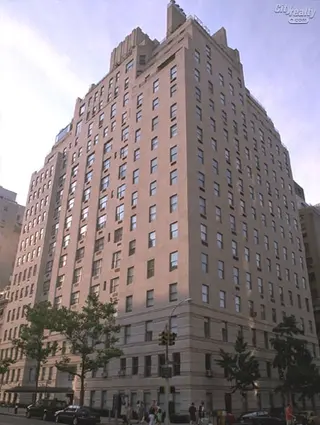 Carter Horsley
Carter HorsleyMar 01, 2012
Carter's Review
This 17-story, 40-unit cooperative apartment building, clad entirely in limestone, at 19 East 72nd Street on the northwest corner at 72nd Street probably has the best base in the city.
There are many, although not enough, limestone-clad luxury apartment buildings in the city. Such façades, in fact, probably are the easiest clue that an apartment is truly "luxury," which is not to imply that brick and glass structures are automatically not "luxury."
Many fine apartment buildings may only have limestone bases and most are rusticated, that is sharply or roughly delineated as large blocks, usually in a quite bold, horizontal pattern following the model of many Italian Renaissance palazzos.
Here, the magnificent, sinuous, very graceful and subtle arcs of the base’s curves are superbly proportioned and soften what would otherwise be the traditionally hard edges of the building.
The vertical curves, which are limited to the lower three stories, give the otherwise quite formal building an undeniable and memorable air of graciousness. They are a constant reminder that too many developers, architects and particularly building managers are contemptuous of pedestrians and their occasional need or desire to lean, sit or perch against or on a building and that curved surfaces are more inviting than spikes, or hard edges.
The use of curves in modern architecture was fairly uncommon simply because it is not "industry-standard" and costs more. The huge popularity of architect Frank Gehry's geometric convolutions, such as in the Guggenheim Museum in Bilbao, Spain, however, has encouraged more usage of curves.
The rectilinear street grid of most of Manhattan, of course, is still very influential, almost as much as the city's building code and the economic realities of development.
This building's canopied entrance is framed with very pleasant bas-relief sculptures of animals by C. Paul Jennewein and there is a pleasant garden visible from the lobby.
The top of the building, which was completed in 1937 and converted to a cooperative in 1949, has some unusual windows, reflecting some unusual apartments, although the façade above the base is quite plain.
The building was designed by Rosario Candela and Mott B. Schmidt for John Thomas Smith who occupied the west half of the 14th and 15th floors.
It replaced the very large and impressive 9-story town house of Charles Tiffany and Louis Comfort Tiffany of jewelry and Art Nouveau lamp fame
Because 72nd is a Central Park transverse road as well as a major cross-town street, there is considerable traffic at this location, which is convenient to famous boutiques on Madison Avenue and many leading art galleries and museums.

- Co-op built in 1937
- 1 apartment currently for sale ($11.9M)
- Located in Park/Fifth Ave. to 79th St.
- 40 total apartments 40 total apartments
- 10 recent sales ($200K to $13.5M)
- Doorman
- Pets Allowed
 6sqft delivers the latest on real estate, architecture, and design, straight from New York City.
6sqft delivers the latest on real estate, architecture, and design, straight from New York City.
